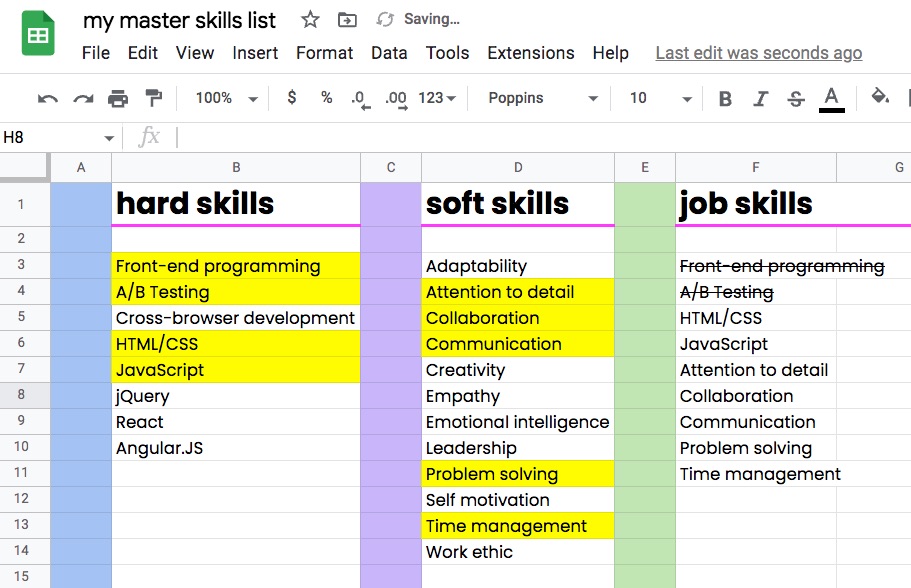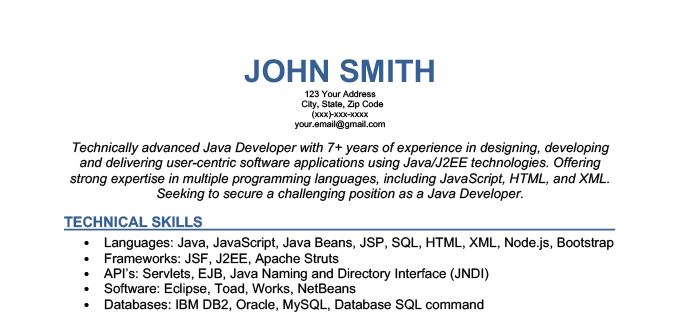Skills To Put On a Resume To Land Your Dream Remote Job
How do you know which skills to put on a resume for a remote job? Learn how to find the skills remote companies are looking for and why this matters now:

How do you know which skills to put on a resume for a remote job?
We know you’re brimming with natural talent and hard-earned expertise. But if you’re not highlighting the right skills on your resume, you may struggle to land the remote role of your dreams.
After all, the wrong skills could prevent your resume from making it past a hiring team’s applicant tracking system (ATS). They might also tell companies that you’re not the right fit, sending your resume into the abyss instead of the interview pile.
That’s why we’re sharing everything you need to know about how to find the right skills and showcase them in your resume. Follow our tips, and you’ll impress hiring teams with everything they’re looking for.
Looking for a remote job in 2024?
Looking for a remote job in 2024?
Not sure this is worth your time? Let’s start with why:
Finding the Right Skills To Put On a Resume Is 100% Necessary for a Remote Job Search
Skills are your unique talents and expertise that equip you to handle work-related tasks and situations. Job seekers pick up all types of skills throughout their career history, education, certifications, and other life experiences.
No two candidates have the same skill set. So it’s vital for job seekers to not only differentiate themselves from their competition, but also prove they’re the perfect fit for a role.
Your resume is the trophy case to show off your skills, talent, and career achievements. Put more relevant skills on display than your competitors, and you may even land the higher end of your salary expectations.
Choosing the right skills to put on a resume also helps you:
Whisper In the Ear of the ATS Robots
Many of the top remote companies hiring receive an average of 250 applicants per job. Since hiring managers can’t physically read all those resumes, they let technology called applicant tracking systems (ATS) do the heavy lifting for them.
Companies program their ATS with the specific keywords, qualifications, job titles, and skills they’re looking for in ideal candidates. ATS scans applications and resumes for these words like an intelligent candidate filter.

Remote hiring teams then have a much smaller, curated list of only the most qualified candidates. ATS will even rank candidates based on how well they meet the company’s applicant criteria.
So finding the right skills to put on a resume is like cracking the ATS code.
For example, let’s say a remote programmer job ad calls for candidates familiar with JavaScript and Python. Adding these specific keywords tells the ATS you have what hiring teams are looking for, so you should move to the next round.
However, if you simply write “multiple programming languages” and leave out those specific keywords, ATS will think your resume lacks those required skills. It may then route your resume to a folder of unqualified applicants who never get an interview.
Psst! Check out our complete guide to beating the ATS for remote jobs next!
The 3 Types of Skills To Put On a Resume
Remote employers are looking for well-rounded candidates with a mix of sought-after skills. These typically fall into three categories:
1. Hard Skills
Hard skills are technical skills you can learn or pick up through practice, training, and experience. These are generally the required skills you’ll need to tackle a role’s responsibilities.
Hard skills are easily measured and verified, such as earning a specific certification or mastering a particular proficiency. For example, you either know how to speak Spanish or develop iOS apps, or you don’t.
Some examples of hard skills include:
- Adobe Creative Suite
- AWS
- C++
- Data Analysis
- Digital Marketing
- Paid Social Media Advertising
- Revenue Forecasting
- Testing/Debugging
- UI/UX Design
- Software proficiencies
- Language fluency
Hard skills often qualify you for specific jobs, whereas soft skills influence how you work and interact with the team/company.
2. Soft Skills
Soft skills usually reflect your personality, traits, and work style. They’re sometimes referred to as “interpersonal skills,” “people skills,” or “social skills.”
Soft skills tell potential employers whether you’ll be a valuable team member and a good company culture fit. They demonstrate whether you can communicate effectively, collaborate remotely, meet deadlines, etc.
Almost every hard skill can be improved with a soft skill. But soft skills are more difficult to learn and measure, making candidates who possess them especially valuable.
In situations where the top candidates have similar hard skills and experiences, hiring teams often lean on soft skills to sway the final decision.
A few examples of the most in-demand soft skills include:
- Remote collaboration
- Customer service
- Decision-making
- Work ethic
- Time management
- Self-motivation
- Leadership
- Empathy
Technically, you can get away with only listing hard skills on your resume (though you might come off as a robot). However, you generally won’t qualify for roles based on soft skills alone.
3. Transferable Skills
Transferable skills are talents any remote employer in any industry will appreciate. Rather than being tied to any specific job, transferable skills move with you as you advance to new positions, employers, or even different career paths.
In our guide, we uncovered examples like:
- Expert-level communication
- Interpersonal skills and emotional intelligence
- Organization and attention to detail
- Critical thinking
- Adaptability
- Teamwork
- Creativity
- Tech skills for remote work
Adding these skills to your resume gives your application a leg up in the great first impressions department.
So now that you know the three major types of skills remote teams are looking for, let’s go over:
How To Find the Right Skills To Put On a Resume To Land Your Dream Remote Role
Relevance is the secret to successful resumes.
Hiring teams don’t need your entire life story. They’re just looking to see if you have what it takes to thrive in a specific role.
Since you don’t have much room on your resume to make a memorable first impression, every keyword, skill, and sentence must serve one purpose: to prove you’re the missing puzzle piece a remote team needs.

To make sure your resume hits the bullseye:
1. Keep an Updated List of All Your Skills Handy
Do you have a master list of all your skills? Because you definitely should.
Having a list like this saves a ton of time during a remote job search. You won’t have to spend valuable time brainstorming a list of your best skills when you want to apply for a new role on Itjobsfromhome.com ASAP.
Instead, you can simply copy and paste the skills from your list into your fresh resume, cover letter template, and online applications in a jiffy.
To create a master skills list:
- Open a blank spreadsheet
- Organize columns for your hard skills, soft skills, and transferable skills
- List all your skills in each column
- Keep your list updated, adding new skills as you pick them up
Save your skills list somewhere easily accessible. With all your skills neatly organized and ready to be put to work, this assembly line will make tailoring your resume for each remote position effortless.
2. Highlight All the Skills In the Remote Job Ad
Learn how to decode the secret language of remote job ads, and you’ll always know which words the ATS gatekeepers are looking for. Then you can use those keywords in your resume template and online applications to get your foot in the door and wow hiring teams.
To scan a remote job ad for the best skills to add to your resume:
1. Grab a copy of the job ad. Either copy and paste it into a blank document or print out the job ad in its entirety.
2. Highlight all the skills mentioned in the job ad that you actually have. Look for skills-related phrases in the job description, such as knowledge of MeteorJS, proficiency in productivity software, meticulous attention to detail, etc.
You may also find a treasure trove of skills and keywords in sections named:
- Responsibilities
- Job duties
- Requirements
- Key skills
- Bonus points for…
- Must-haves and nice-to-haves
Highlighting each skill you possess makes them easier to spot.
Don’t forget, a company’s job ad isn’t the only place to find valuable skills keywords. Take a look at the skills mentioned in a company’s profile, website, and social channels.
Look for skills the company values. If a job ad doesn’t call for innovation or creativity, but a company’s mission statement mentions them, go ahead and add them to your resume. This extra effort could position you as a fantastic company culture fit.
3. Compare the Skills Listed In the Job Ad with Your Own
In a new column, add all the skills you highlighted in the job ad to your master skills list. Highlight all your matching skills, so you know exactly which ones to add to your resume, cover letter, and application.

Each time you use one of these skills in your documents (more on this next!), cross it off the job skills column to keep everything organized.
Putting All the Pieces Together
Now that you have a master list of the best keywords and skills to put on a resume, here’s how to leverage them for success:
Sprinkle Your Skills Throughout Your Resume and Cover Letter
Your resume should contain specific examples of how you’ve used your skills to achieve noteworthy results. You could include these in your personal branding statement or objective at the top, like in this resume example:

You should also weave your skills throughout your career history section. Provide specific, measurable results of your skills, such as:
- Effectively collaborated with teams in three different time zones using Slack for asynchronous communication and Trello for project management.
- Spearheaded Instagram marketing campaigns that boosted conversions by 40%, improved click-through rates by 60%, and lowered costs per click 25%.
- Resolved 85% of customer support tickets without escalation on the first call.
- Strategized and implemented protocols to help teams meet project milestone deadlines on a new 4-day workweek.
Organize your resume so it contains engaging examples of all the skills someone needs to thrive in the position. Whatever skills you can’t fit here can go into a separate skills section.
Build a Resume Skills Section
Consider creating a resume skills section for every skill you can’t quite work into your career history. This bullet list gives hiring teams an easy-to-scan recap of your skills relevant to the position. It also feeds the ATS their favorite food (perfect-match keywords).

Add no more than 10 to 15 skills here to prevent your list from getting messy or overwhelming.
Using a resume builder, will help you a lot in this process.
Using a resume builder, will help you a lot in this process.
Now You Know How To Find The Best Skills To Put On a Resume To Land Your Next Remote Role
Finding the best skills to put on a resume isn’t a challenging task, but it does take time. So start today by creating your master skills list. Then, check out the new skills tags on itjobsfromhome.com by browsing for remote roles in your industry.
Follow today’s three-step process, and your skills may help catapult you into the perfect remote role you’ve been chasing.